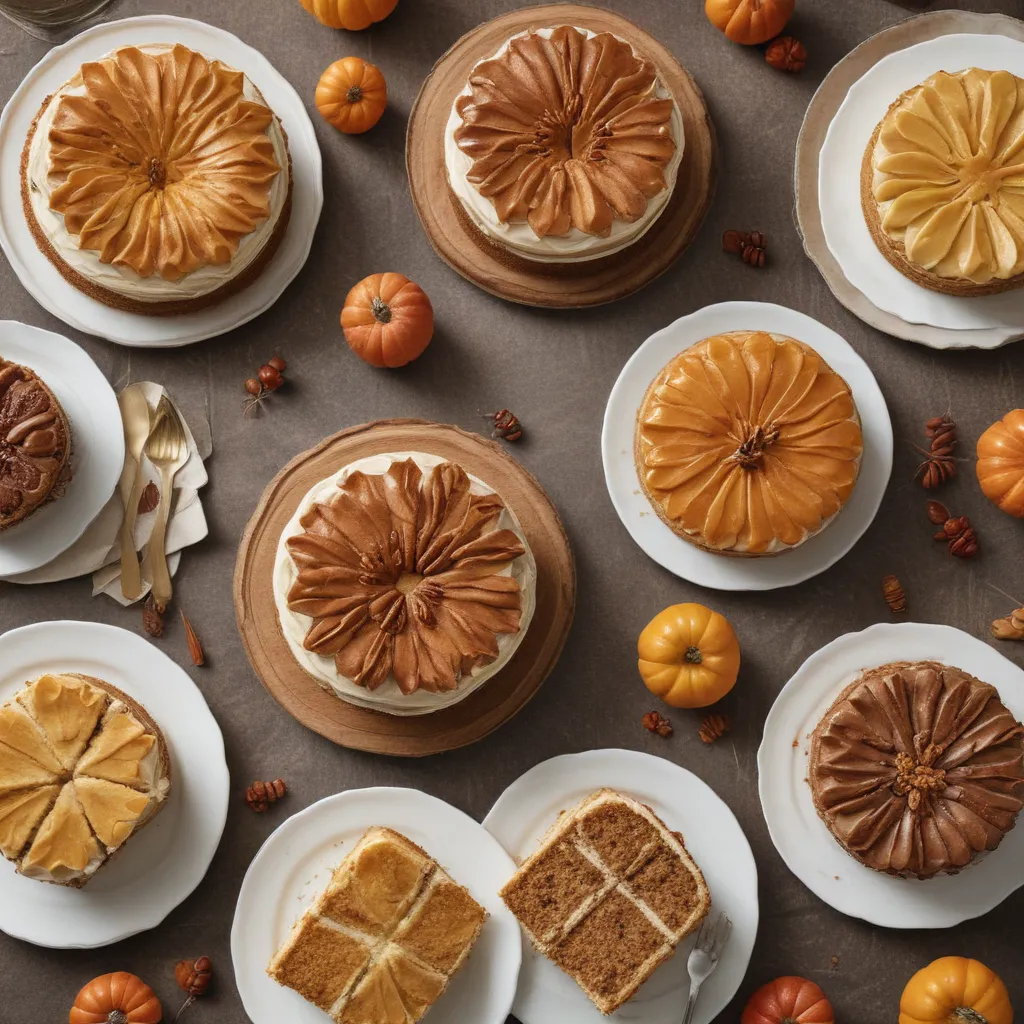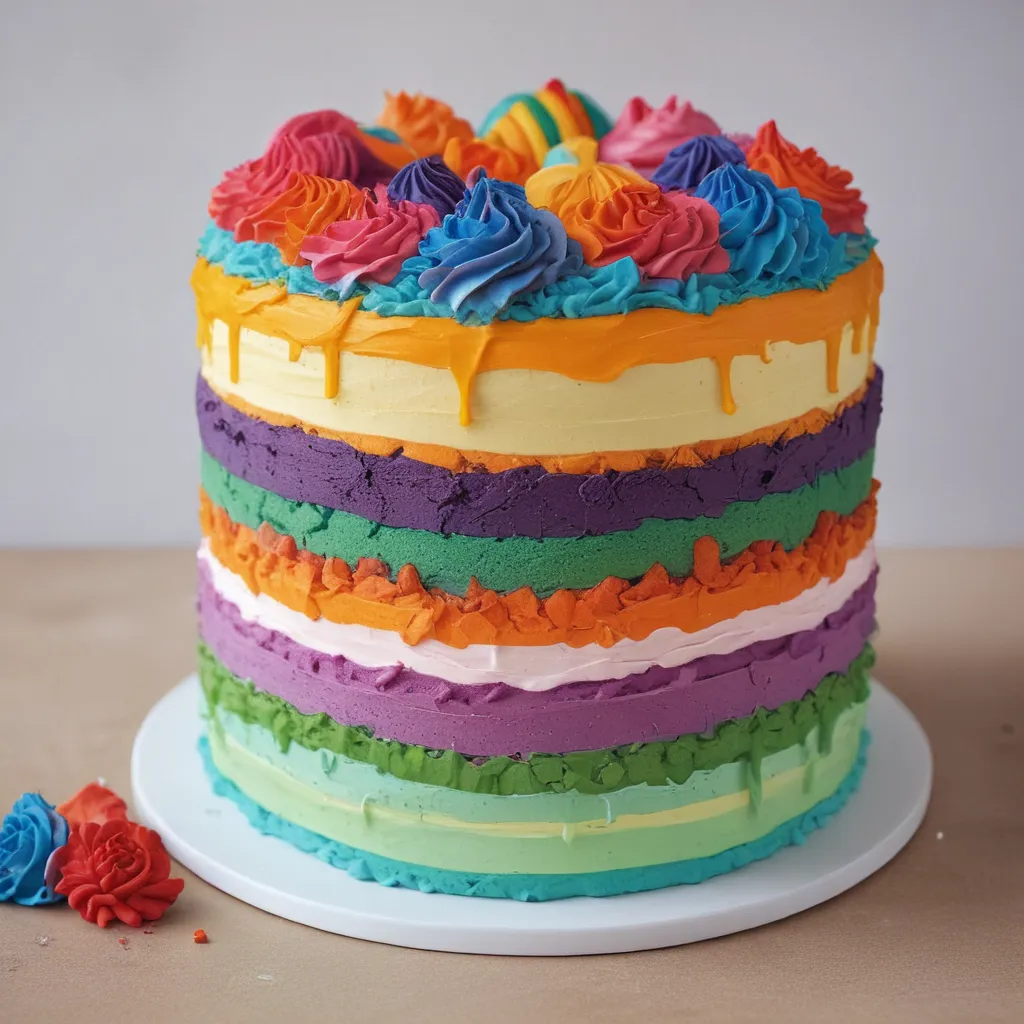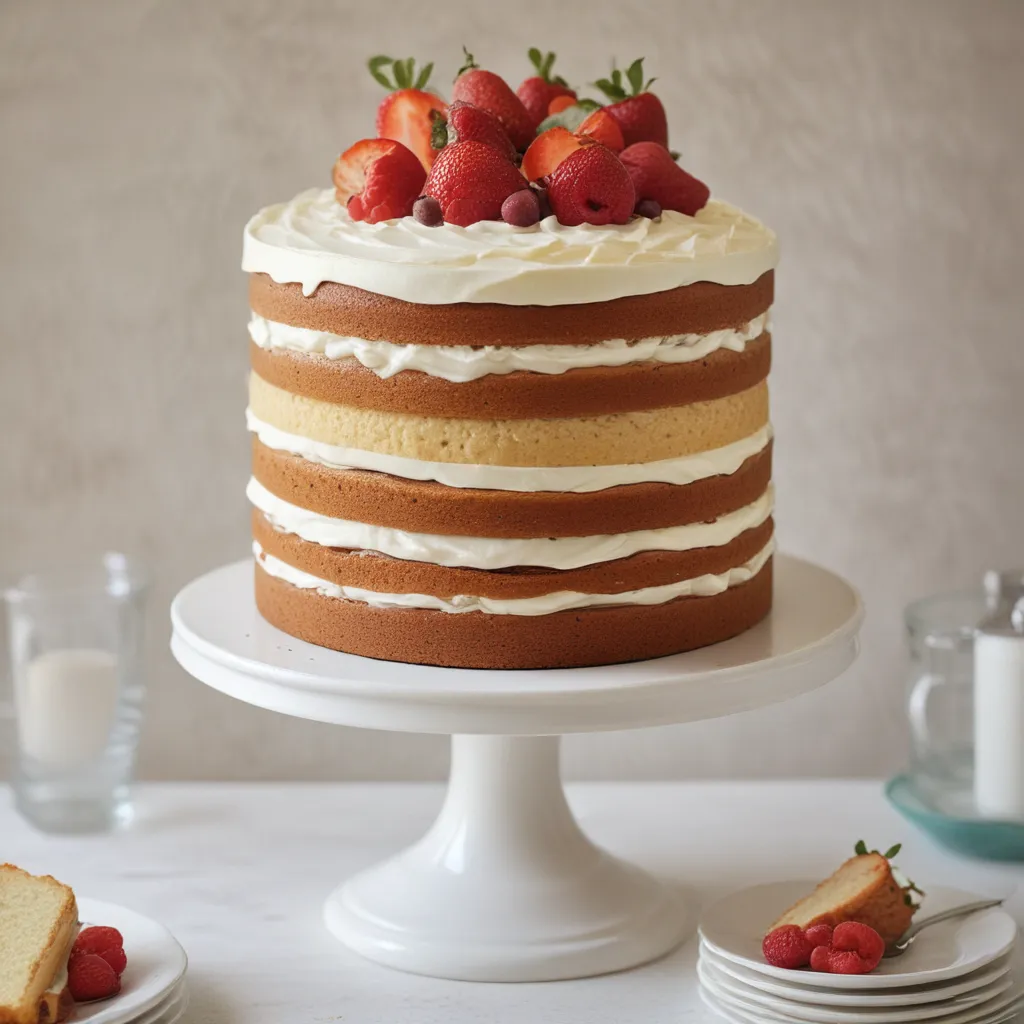Ah, the sweet allure of a freshly baked cake with a luscious fruit filling – is there anything more scrumptious? As the owner of Jax Cake Shop in San Jose, I’ve had the pleasure of creating countless cakes that bring this delightful combination to life. And let me tell you, it’s an art form that takes some serious skill to master.
But fear not, my fellow bakers! I’m here to share all of my expert tips and tricks to help you create cakes with fruit fillings that will have your friends and family swooning. So, grab your apron, preheat that oven, and let’s dive in, shall we?
Selecting the Perfect Fruit
Ah, the foundation of any great fruit-filled cake – the fruit itself. Now, you might be tempted to just grab the first ripe and juicy-looking berries or stone fruits you can find, but let me tell you, there’s a bit more to it than that.
You see, not all fruits are created equal when it comes to baking. Some can be a bit too tart or watery, while others might just get lost in the cake’s texture. That’s why it’s important to choose your fruit wisely. I always recommend going for fruits that have a nice balance of sweetness and acidity, with a firm, juicy texture that can hold up to the baking process.
For example, I absolutely adore using fresh raspberries or blackberries in my cakes. Their bright, tangy flavor pairs beautifully with the rich, buttery cake, and their firm, juicy nature means they’ll hold their shape even after being baked. Likewise, freshly sliced peaches or nectarines can add a heavenly, almost jam-like filling that’s simply divine.
And let’s not forget about citrus fruits! A little zing of lemon or orange zest can really elevate the flavors in your cake and perfectly complement the sweetness of the filling. Just be sure to use the zest sparingly, as a little goes a long way.
Now, I know what you’re thinking – what about those luscious, juicy strawberries? Well, while they can make a lovely addition to a cake, they can also be a bit tricky to work with. Their high water content means they can sometimes turn a bit soggy or seep too much liquid into the cake. But don’t worry, with the right techniques, you can absolutely incorporate them into your bakes. More on that later!
Preparing the Fruit
Alright, now that we’ve got the fruit selection down, let’s talk about preparation. This is a critical step, my friends, and one that can make or break your fruit-filled masterpiece.
First and foremost, you’ll want to make sure your fruit is perfectly ripe and at the peak of its flavor. Underripe fruit can be tart and lacking in sweetness, while overripe fruit can turn mushy and lose its structural integrity. I always recommend giving your fruit a gentle squeeze to check for the perfect balance of firmness and juiciness.
Once you’ve selected your star ingredients, it’s time to get to work. Depending on the type of fruit you’re using, you may need to peel, pit, or slice it. For berries, a quick rinse and pat-dry is usually all they need. But for stone fruits like peaches or plums, you’ll want to carefully remove the pits and cut the fruit into bite-sized chunks or slices.
And here’s a pro tip: if you’re using a particularly juicy fruit, like fresh strawberries, you may want to consider tossing them with a bit of cornstarch or flour before adding them to your cake batter. This will help to absorb any excess moisture and prevent your cake from getting soggy.
Another important step is to let your fruit macerate for a bit before using it. Simply toss the prepared fruit with a bit of sugar and let it sit for 30 minutes to an hour. This will help to draw out the natural juices and create a lovely, syrupy filling that’s perfect for layering into your cake.
Perfecting the Cake Batter
Now that we’ve got the fruit all sorted out, it’s time to turn our attention to the cake itself. After all, the cake is the canvas upon which we’ll be painting our delicious fruit masterpiece, so it’s gotta be just right.
The key to a successful fruit-filled cake is striking the perfect balance between the tender, moist crumb of the cake and the bold, juicy flavors of the fruit. And let me tell you, it’s a delicate dance that takes some serious skill to perfect.
One of the most important things to consider is the fat content of your cake batter. You’ll want to use a recipe that calls for a higher percentage of fat, whether that’s butter, oil, or a combination of the two. This extra fat will help to keep the cake tender and moist, even with the addition of all that juicy fruit.
But it’s not just about the fat content – the method of mixing is also crucial. I always recommend using the classic creaming method, where you beat the butter and sugar together until light and fluffy before gradually adding in the other ingredients. This helps to incorporate air into the batter, resulting in a cake that’s light and airy, with a perfect crumb.
And let’s not forget about the flour! You’ll want to use a high-quality, all-purpose flour that’s been sifted to ensure a smooth, even texture. And be sure not to overmix the batter once the flour has been added – that’s a surefire way to end up with a tough, dense cake.
Finally, don’t be afraid to get a little creative with your flavors. A splash of vanilla extract or a pinch of cinnamon can really elevate the overall taste of your fruit-filled cake. And if you’re feeling particularly adventurous, you could even try incorporating a bit of booze, like a splash of Grand Marnier or a dollop of mascarpone cheese, to really make your creation stand out.
Assembling the Cake
Alright, now that we’ve got the fruit and the cake batter all sorted out, it’s time for the fun part: assembling your masterpiece!
First and foremost, you’ll want to make sure that your cake layers are completely cooled before you start layering on the fruit. Trying to assemble a warm cake is a recipe for disaster (trust me, I’ve learned this the hard way).
Once your cakes are nice and cool, it’s time to get to work. I like to start by spreading a generous layer of fruit filling on the bottom cake layer, making sure to leave a bit of a border around the edges to prevent any leakage. Then, I’ll carefully place the next layer of cake on top, pressing down gently to ensure a nice, even surface.
Now, here’s where things can get a little tricky. Depending on the type of fruit you’re using, you may need to adjust your approach. For example, if you’re working with juicier fruits like strawberries or peaches, you’ll want to be extra careful to not overfill the layers, as the fruit can become too wet and cause the cake to become soggy.
On the other hand, if you’re using firmer fruits like raspberries or blackberries, you can be a bit more generous with the filling. Just be sure to distribute it evenly across the surface of the cake, and don’t be afraid to use a bit of the reserved fruit juices to help bind everything together.
And speaking of those reserved juices, don’t let them go to waste! I like to use them to create a simple glaze or syrup that I can drizzle over the top of the assembled cake. Not only does this add a gorgeous, shiny finish, but it also infuses the whole cake with that delectable fruit flavor.
Finally, once your cake is all assembled, it’s time to give it a little love. I like to finish it off with a dusting of powdered sugar or a sprinkle of toasted nuts or coconut flakes. And don’t forget to let your creation chill in the fridge for at least a few hours (or even overnight) before serving. This will help the flavors meld and the fruit filling to set up nicely.
Troubleshooting Common Fruit Cake Challenges
Alright, my fellow bakers, I know that working with fruit fillings can be a bit of a tricky business. But fear not, I’m here to help you navigate the common pitfalls and ensure that your fruit-filled cakes are always a hit.
One of the most common issues I see is the dreaded “soggy bottom” syndrome. You know what I’m talking about – that sad, mushy layer of cake that’s been completely overwhelmed by the fruit juices. Well, fear not, because I’ve got a few tricks up my sleeve to help you avoid this disaster.
First and foremost, make sure you’re using the right ratio of fruit to cake batter. If you’ve got too much fruit, it’s going to be virtually impossible to keep your cake from turning into a watery mess. As a general rule of thumb, I like to use about 1/2 cup of fruit filling per 8-inch cake layer.
And speaking of that fruit filling, be sure to let it macerate and drain off any excess liquid before you start assembling your cake. This will help to prevent that unwanted sogginess.
Another common issue is that the fruit can sometimes sink to the bottom of the cake during baking. This can result in an uneven texture and distribution of flavors. To combat this, I like to toss the fruit in a bit of flour or cornstarch before folding it into the batter. This helps to keep the fruit suspended and evenly distributed throughout the cake.
And let’s not forget about the dreaded “fruit explosion” – when the fruit filling starts oozing out of the sides of the cake during baking or assembly. This can be a real mess to deal with, but there’s an easy fix. Simply make sure you’re leaving a bit of a border around the edges of your cake layers when adding the fruit filling. This will help to contain any potential leaks and keep your creation looking picture-perfect.
Finally, let’s talk about that tricky top layer. If you’re not careful, the fruit filling can sometimes seep up through the top of the cake, leaving you with a sticky, gooey mess. To prevent this, I like to brush the top of the cake with a bit of simple syrup or a diluted fruit glaze before adding the final layer. This creates a protective barrier and helps to keep everything nice and tidy.
So, there you have it, my friends – all the tips and tricks you need to master the art of fruit-filled cakes. With a little bit of practice and a whole lot of delicious experimentation, I know you’ll be whipping up show-stopping creations that will have everyone begging for seconds.
Now, if you’ll excuse me, I think it’s time for me to go whip up a little something special in the Jax Cake Shop kitchen. Who’s up for a slice of my famous raspberry swirl cake?





